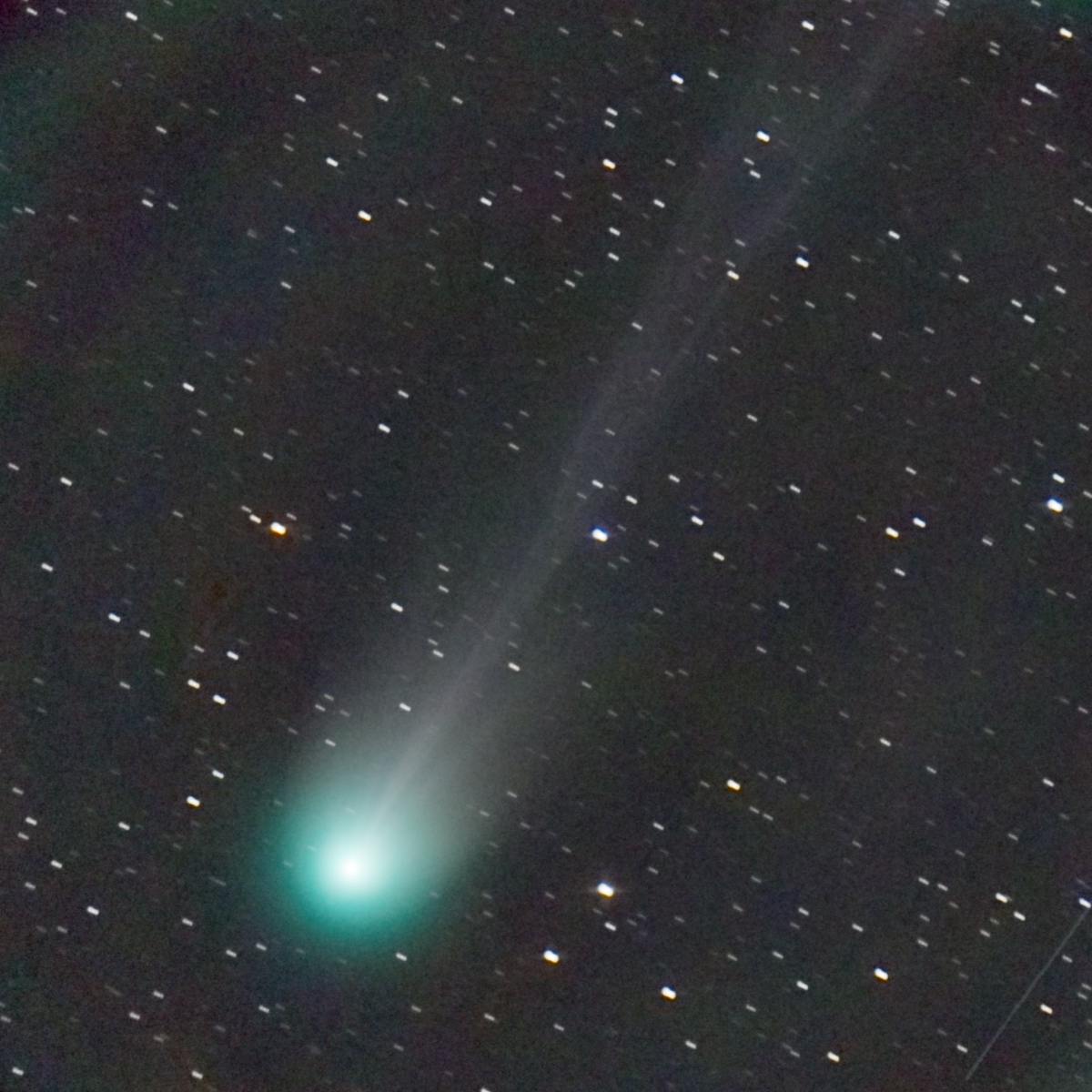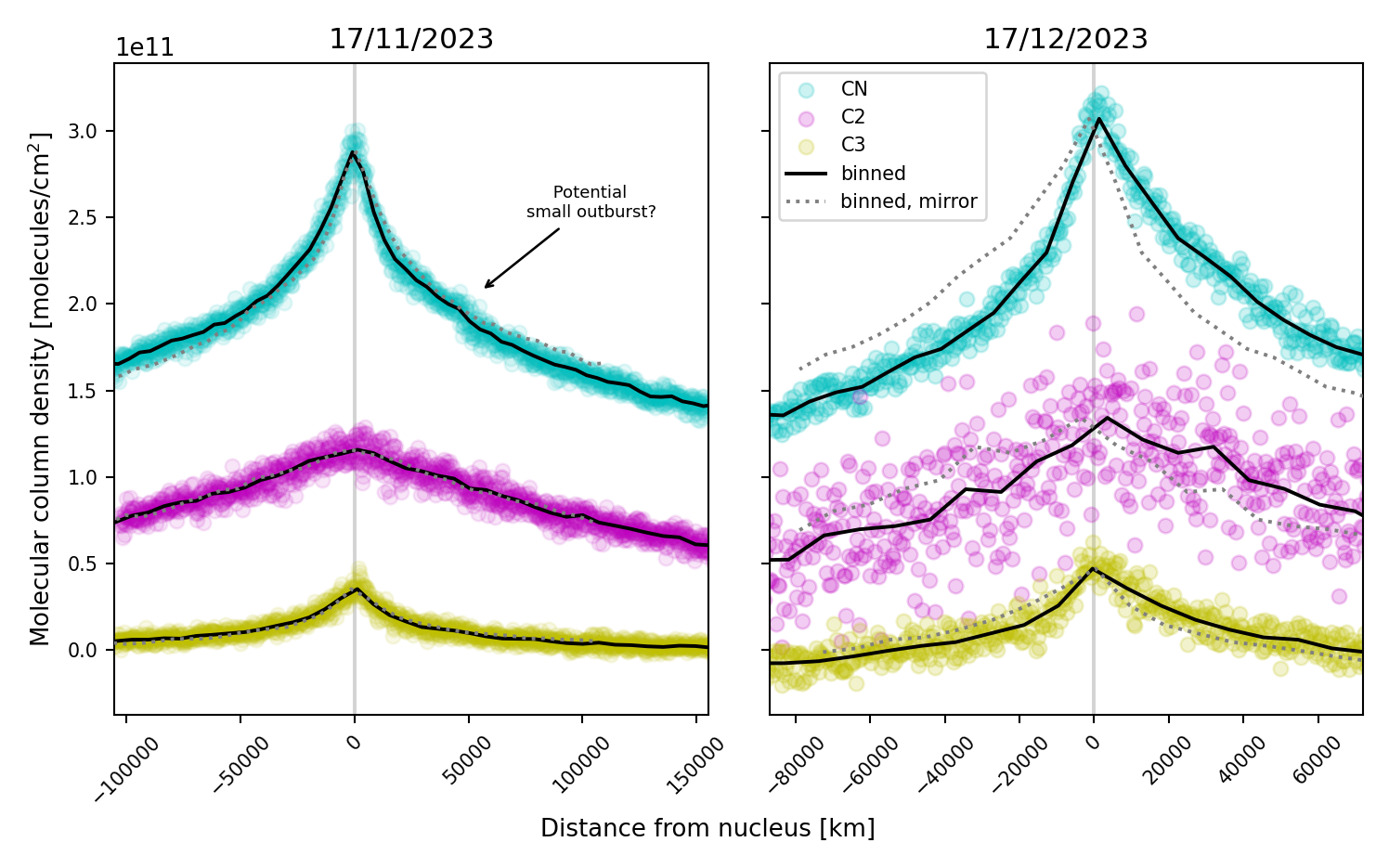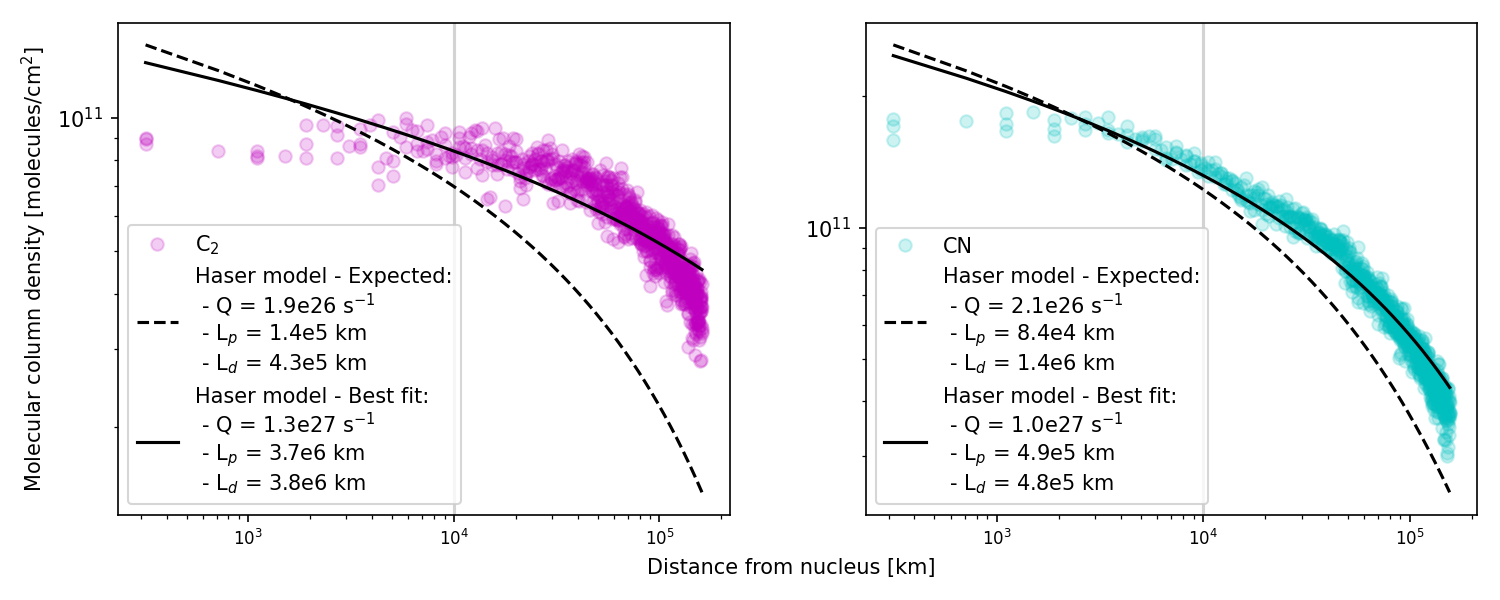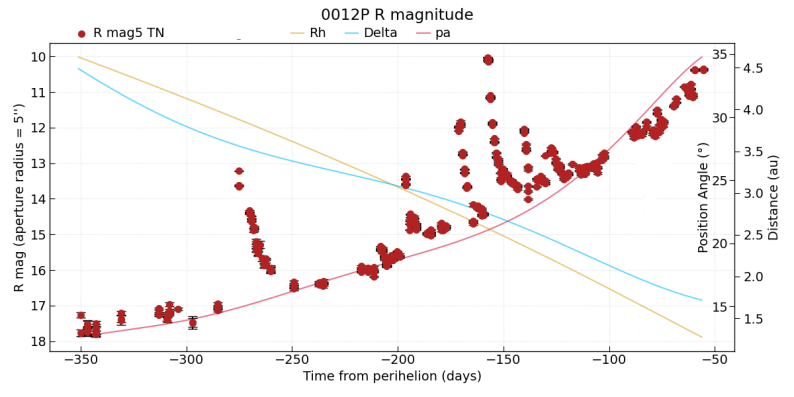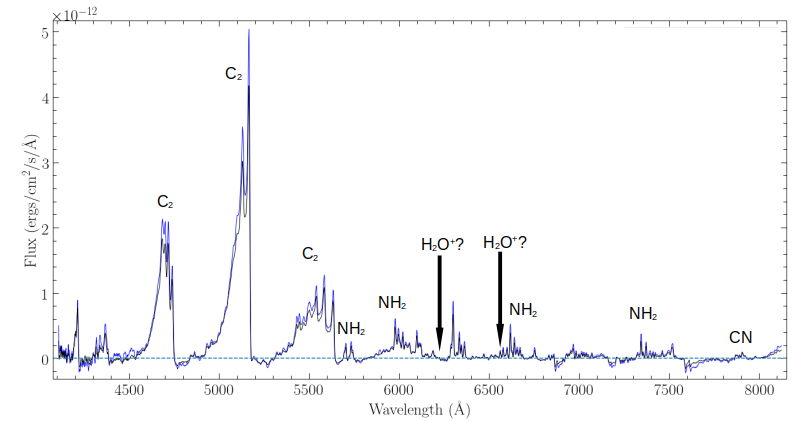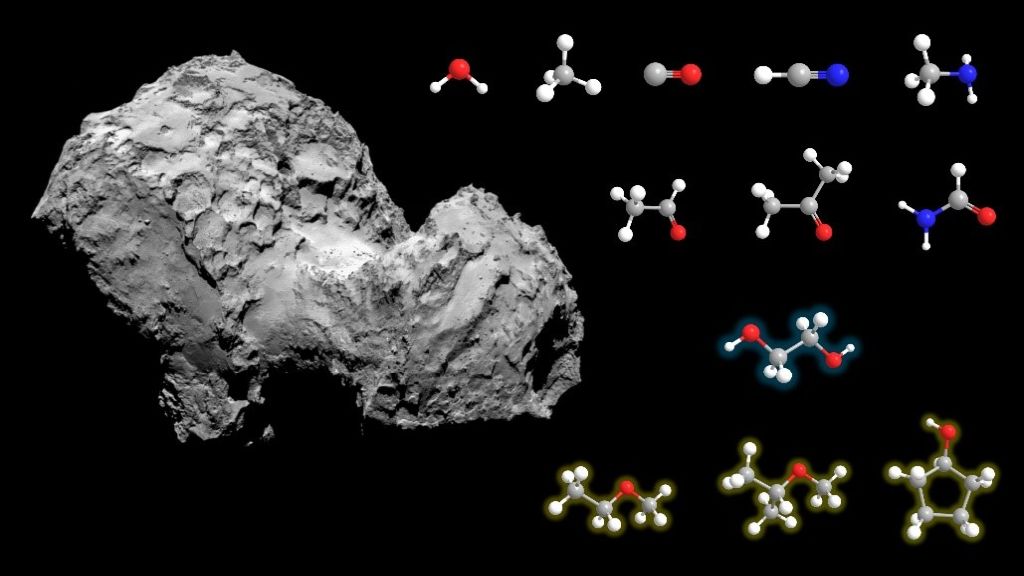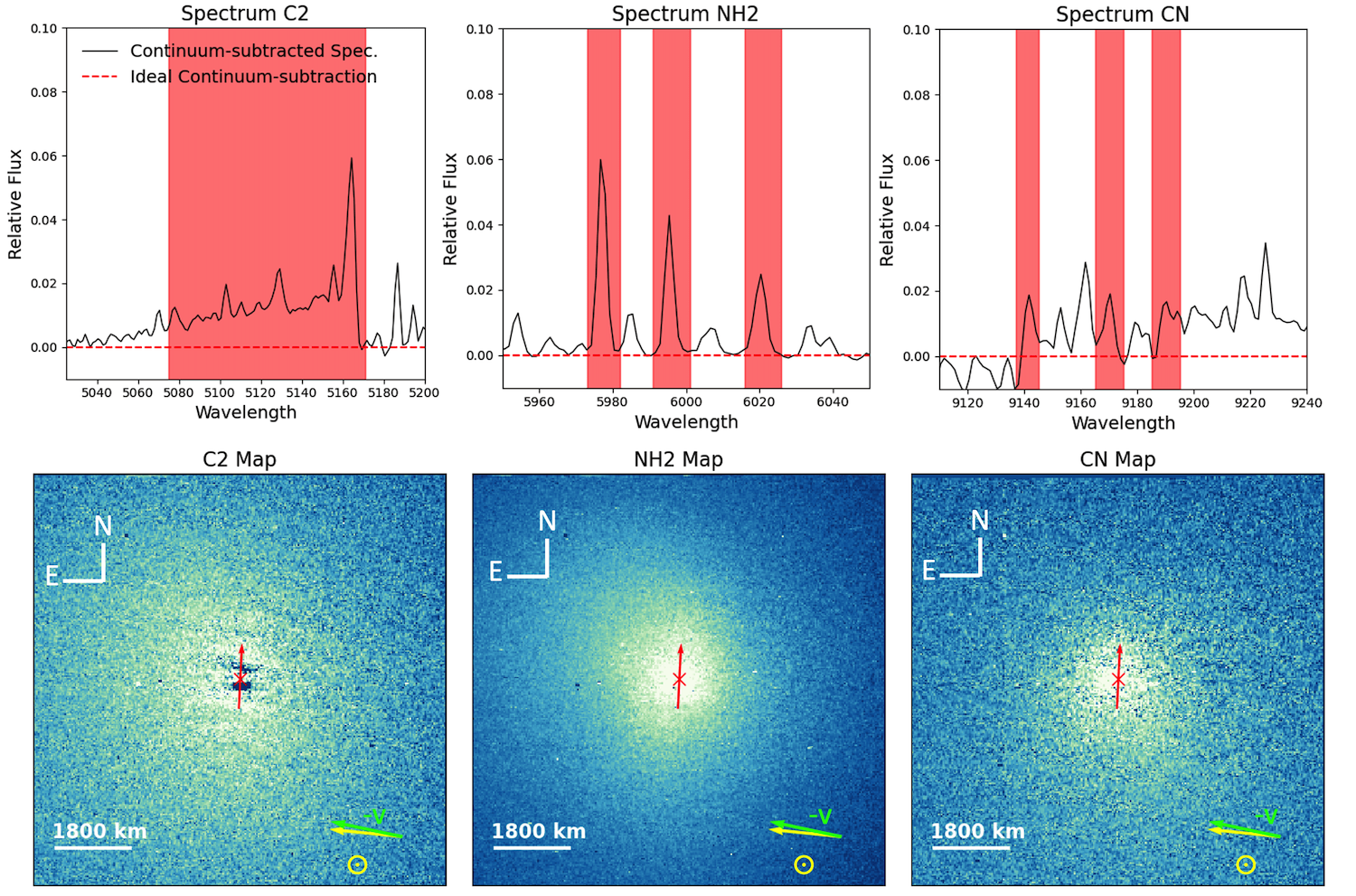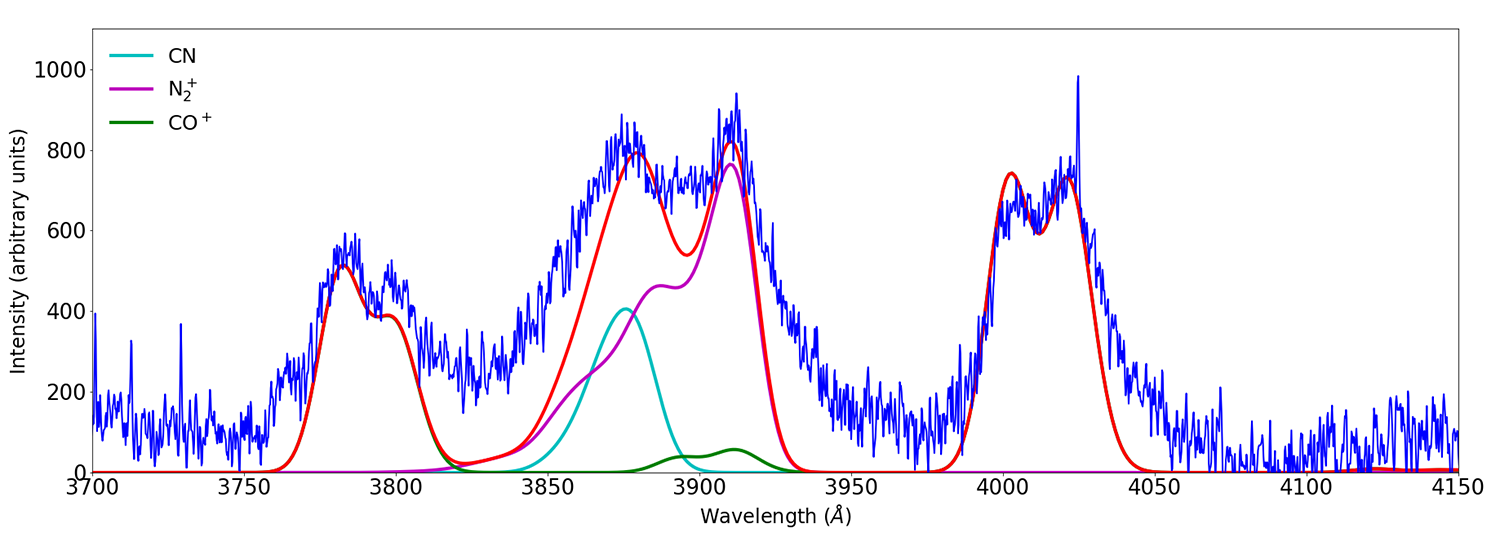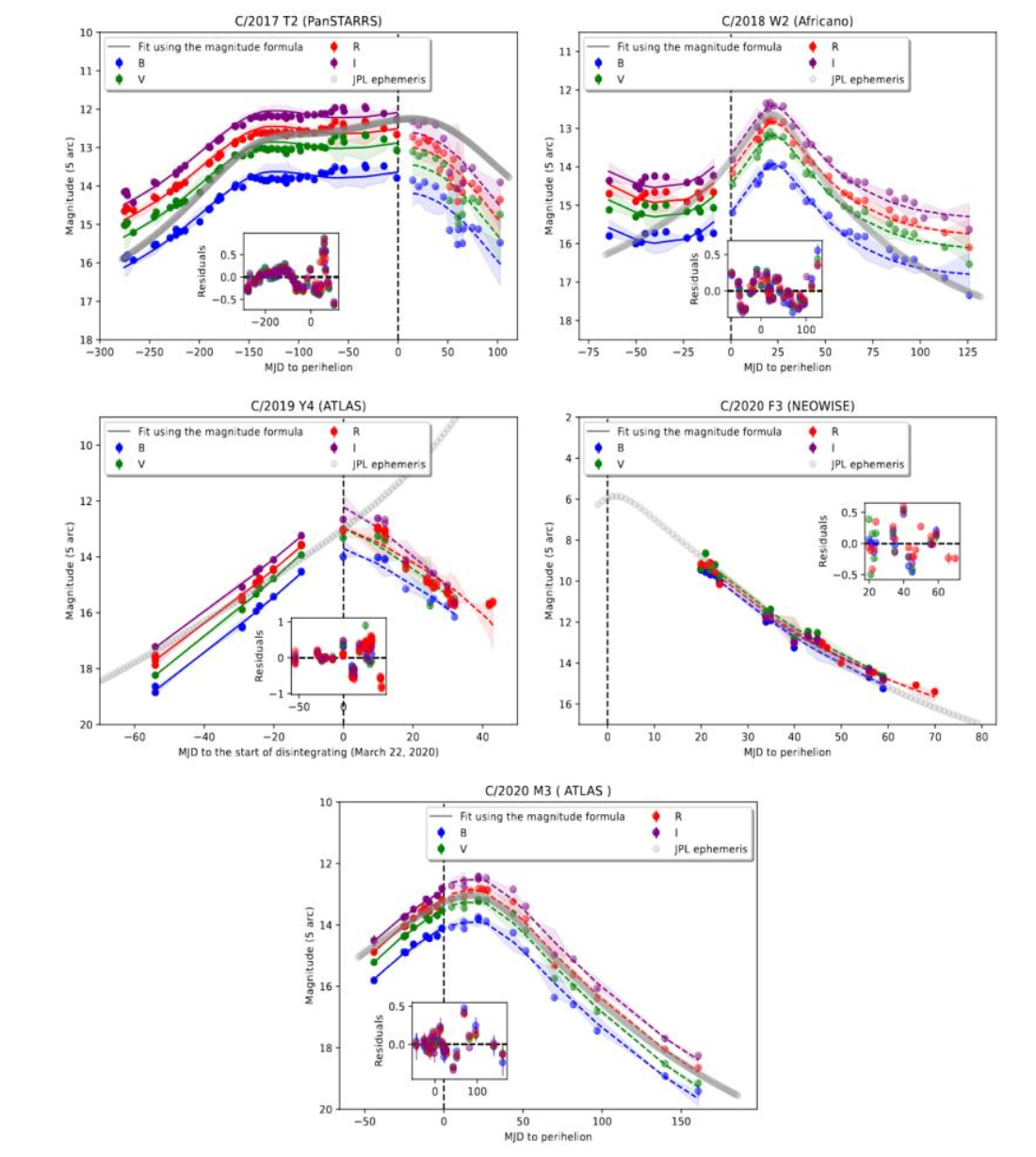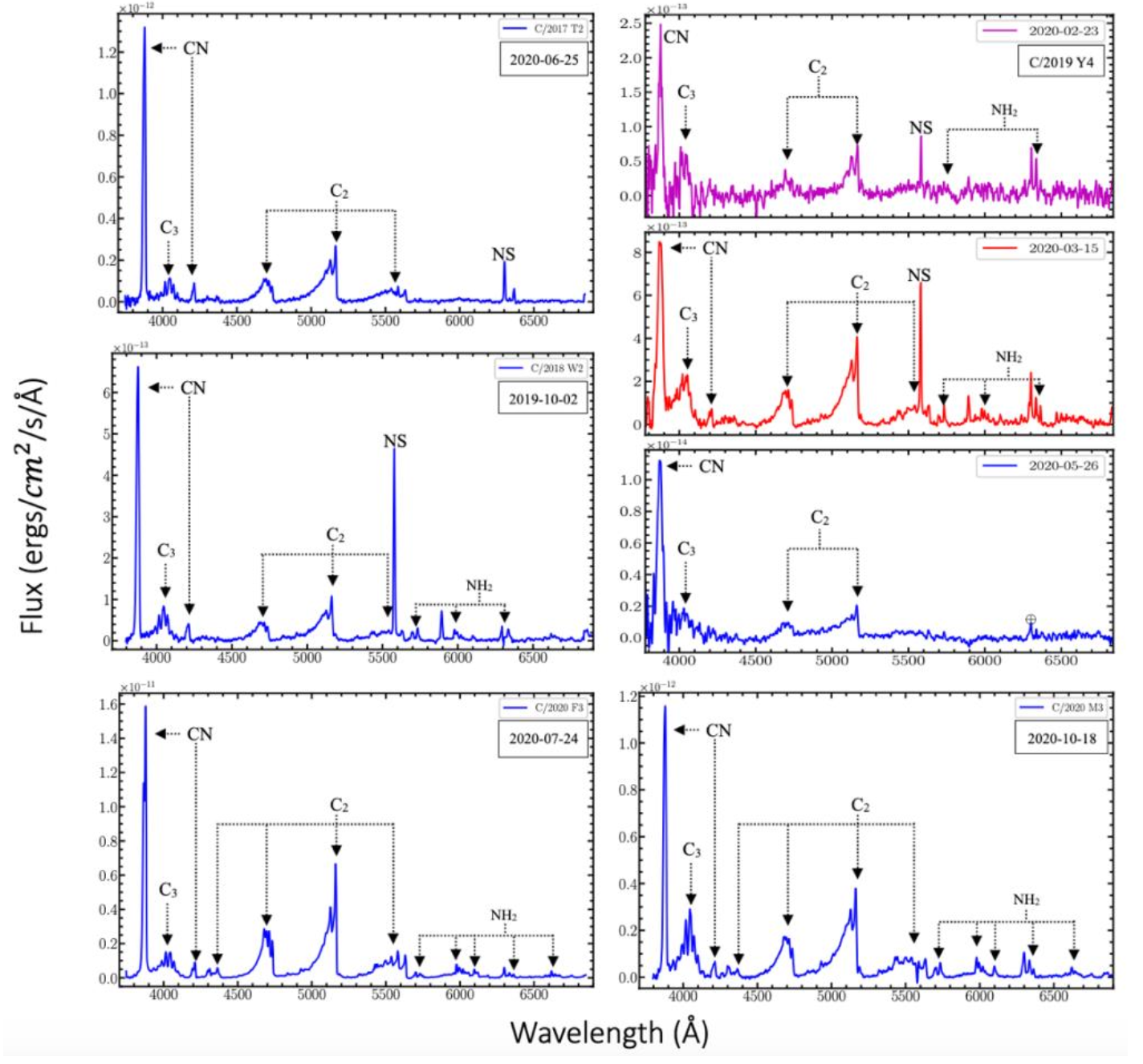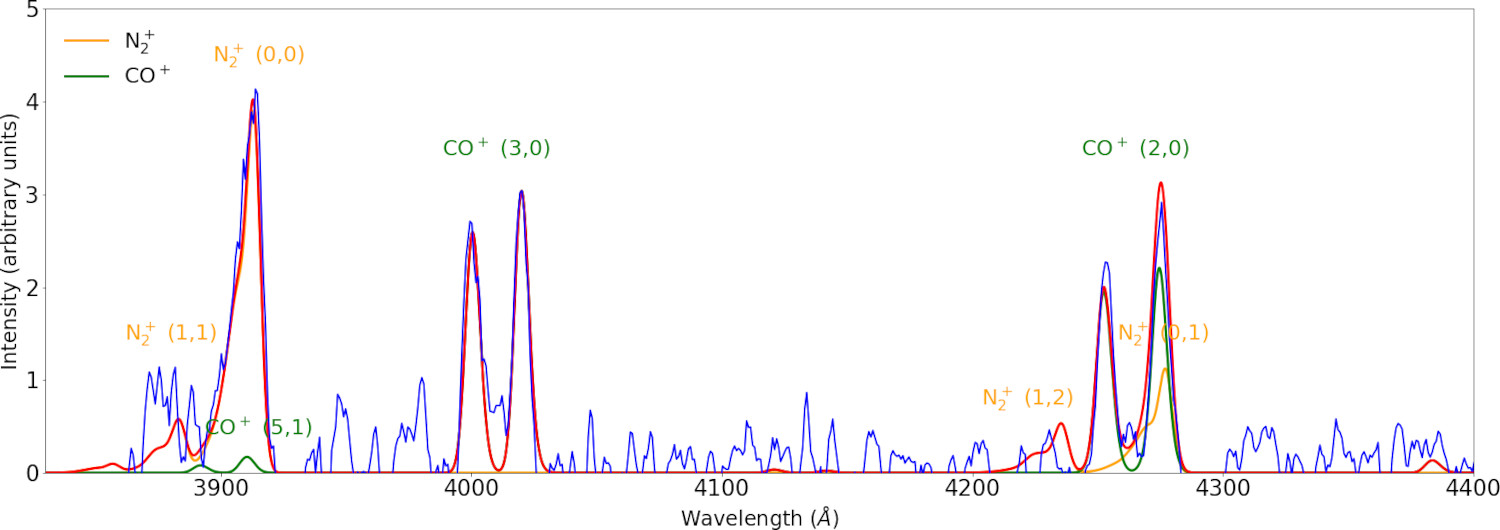SB9
Recent results on the composition of comets
Co-organized by EXOA
Convener:
Nicolas Biver
|
Co-conveners:
Cyrielle Opitom,
Martin Rubin,
Emmanuel Jehin,
Oleksandra Ivanova,
James Bauer,
Sara Faggi,
Adam McKay
is being done through several in-situ and remote observations techniques.
In the context of the Rosetta mission and missions to small bodies including
Comet Interceptor, and international observing campaigns
of bright comets such as C/2021 A1 (Leonard), C/2022 E3 (ZTF) and
12P/Pons-Brooks, we solicit presentations on recent investigations.
Abstracts on optical, infrared, radio,... remote observations of comets and
active bodies, from the ground as well as space observatories such as JWST, as
well as concerning recent results from in-situ (e.g. mass spectrometry) missions
are welcome.
Session assets
08:30–08:40
|
EPSC2024-371
|
On-site presentation
08:40–08:50
|
EPSC2024-313
|
ECP
|
On-site presentation
08:50–09:00
|
EPSC2024-951
|
ECP
|
On-site presentation
09:00–09:10
|
EPSC2024-352
|
ECP
|
On-site presentation
09:10–09:15
Q & A
09:15–09:25
|
EPSC2024-350
|
On-site presentation
09:25–09:35
|
EPSC2024-38
|
On-site presentation
09:35–09:45
|
EPSC2024-594
|
On-site presentation
09:45–09:55
|
EPSC2024-455
|
On-site presentation
JWST NIR Nucleus Surface Reflectance Spectrum of Centaur 29P/Schwassmann-Wachmann 1 Provides Link to its Progenitor TNO Population
(withdrawn)
09:55–10:00
Q & A
Coffee break
Chairpersons: Emmanuel Jehin, Nicolas Biver
10:40–10:50
|
EPSC2024-421
|
ECP
|
On-site presentation
10:50–11:00
|
EPSC2024-1075
|
ECP
|
On-site presentation
11:00–11:10
|
EPSC2024-628
|
ECP
|
On-site presentation
11:10–11:15
Q & A
11:15–11:25
|
EPSC2024-59
|
On-site presentation
11:35–11:45
|
EPSC2024-1139
|
ECP
|
On-site presentation
11:45–11:55
|
EPSC2024-460
|
ECP
|
On-site presentation
11:55–12:00
Q & A
I29
|
EPSC2024-1247
|
Virtual presentation
I30
|
EPSC2024-1245
|
On-site presentation
I31
|
EPSC2024-121
|
On-site presentation
